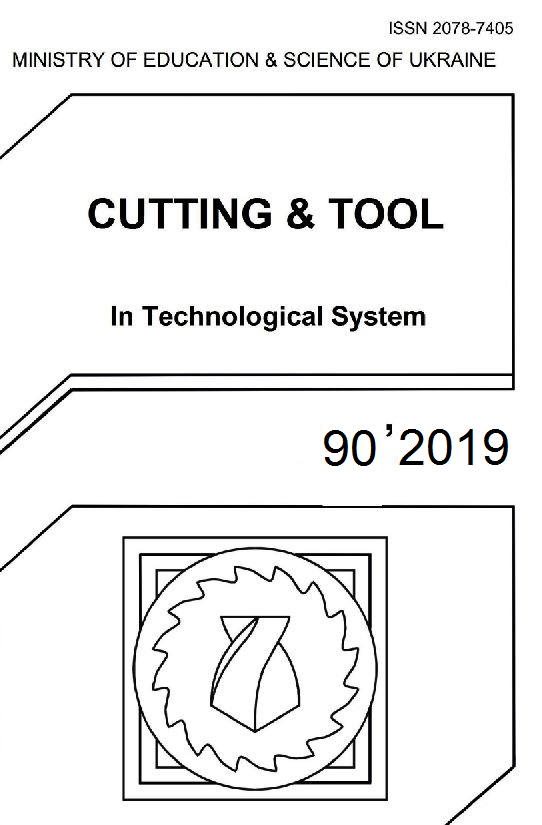ANALYSIS OF SURFACE MICROHARDNESS ON DIAMOND BURNISHED CYLINDRICAL COMPONENTS
DOI:
https://doi.org/10.20998/2078-7405.2019.90.15Keywords:
burnishing, Factorial Experimental Design, microhardness of burnished layer, number of burnishing passes.Abstract
Cold-plastic forming technologies are one of the most dynamically developing technological processes in these days The main purpose of modern plastic forming is to achieve the shape and size of the designed component by providing minimum environmental loads, while ensuring the proper values of strength and deformation characteristics.These methods include surface strengthening processes, characterized by the introduction of cold forming hardening and residual compressive stress [1]. In this paper, we study the main types of surface consolidation in detail to burnishingof outer cylindrical surfaces.The application of burnishing results in cost reduction in several aspects: cheaper, lower alloyed, lower rigid structural materials can be used as raw materials, abandoned grinding and other fine surface machining, can be replaced by heat treatment operations. In our investigation we used polycrystalline diamond tool with spherical machining surface on C60 hardened steel examining the changing of surface micro-hardness caused by different burnishing parameters.References
M. Tisza, A. Balogh, J. Schaffer: Mechanical Technologies, Miskolc, (2007) p:73-74. (in Hungarian).
V. Mertinger, J. Sólyom, M. Benke: MonoCap optics for X-ray diffraction tests, Journal of Materials Testers, (2012), pp.: 60-64.
G. Taguchi: System of experiment design, 1. Experimental design, UNIPUB, Kraus International Publications, White Plains, New York, (1987) ISBN 0-527-91621-8.
L. Fridrik: Chosen chapters from the topics of experimental design of production engineering, MűszakiKönyvkiadó, Budapest, 1987 (In Hungarian).
L. Bálint, L. Gribovszki (1975). The basics of machine engineering technology, Miskolc, p: 418-442. (in Hungarian).
V. Ferencsik: Examination of 3D Surface Roughness of diamond Burnished Surfaces, Scientific Student Paper (2013) p.: 37.
W. Brostow, K. Czechowski, W. Polowski, P. Rusek, D. Toboła, I. Wronska: Slide diamond burnishing of tool steels with adhesive coatings and diffusion layers, Material Research Innovations, (2013) pp.: 269-277.
T.A. El-Taweel, M.H. El-Axir: Analysis and optimization of the ball burnishing process through the Taguchi technique, International Journel Advertising of Manufacture Technology 41, (2009) pp.: 301-310.
G. Varga.: Effects of Technological Parameters on the Surface Texture of Burnished Surfaces, Key Engineering Materials, Volume 581: Precision Machining VII, 2013, pp.: 403-408.
Wilson Instruments Tukon 2100B Vickers/Knoop Hardness Tester User Guide.
Downloads
Published
Issue
Section
License
Copyright Notice
Authors who publish with this Collection agree to the following terms:
1. Authors retain copyright and grant the Collection right of first publication with the work simultaneously licensed under a Creative Commons Attribution License that allows others to share the work with an acknowledgement of the work's authorship and initial publication in this Collection.
2. Authors are able to enter into separate, additional contractual arrangements for the non-exclusive distribution of the Collection's published version of the work (e.g., post it to an institutional repository or publish it in a book), with an acknowledgement of its initial publication in this Collection.
3. Authors are permitted and encouraged to post their work online (e.g., in institutional repositories or on their website) prior to and during the submission process, as it can lead to productive exchanges, as well as earlier and greater citation of published work.

